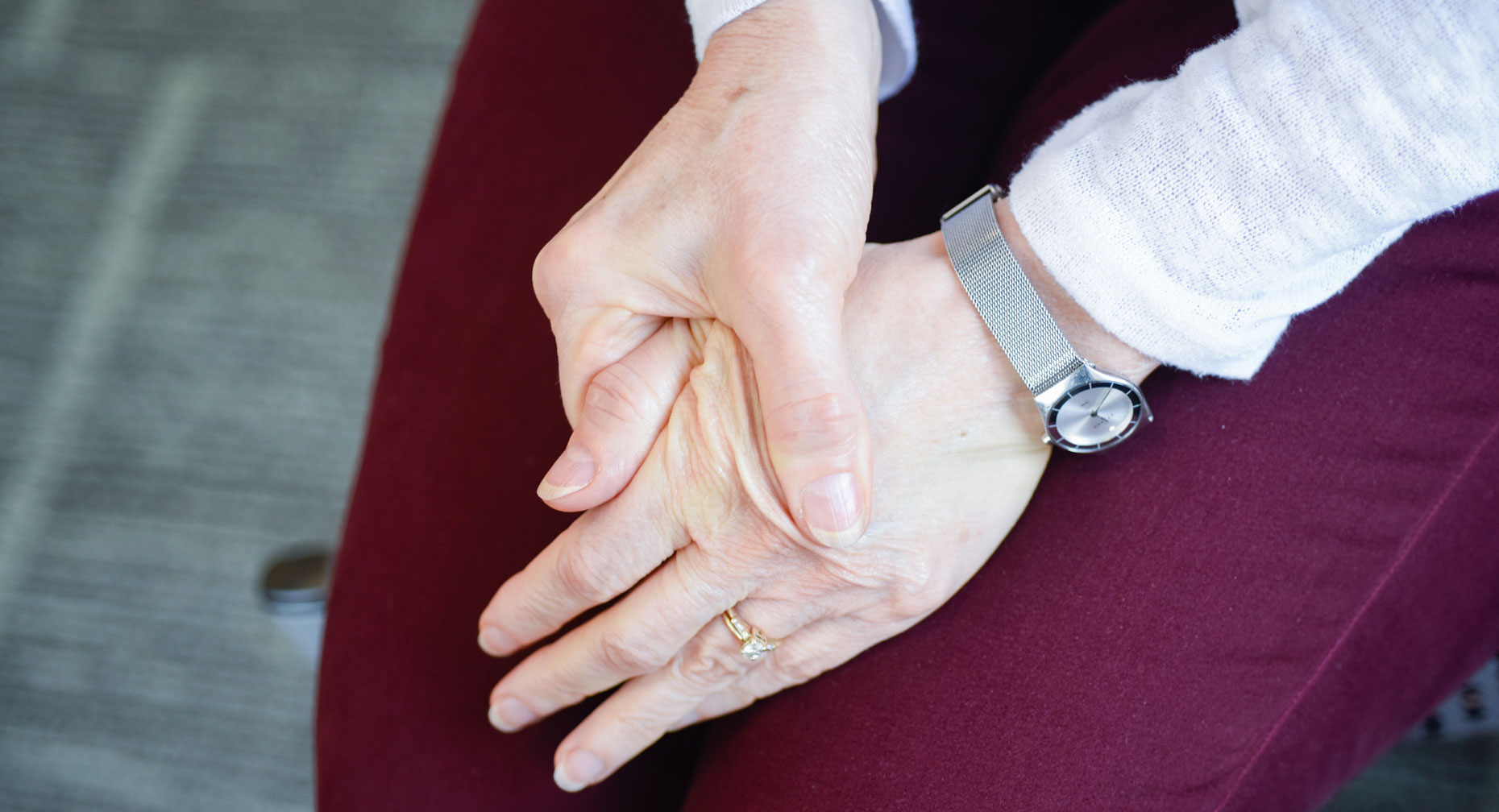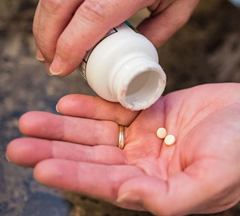- Bone and Joint Health
- Health Topics
- Joint Conditions/Injuries/Treatment
- Joint Pain/Pain Management
- Osteoarthritis
Oh My Aching Hands!

Answer a few questions and we'll provide you with a list of primary care providers that best fit your needs.
Most of us don’t think twice about turning a key in a lock or opening a lid on a jar. But if you have arthritis in your fingers or thumb joints, these daily tasks can be difficult. And painful.
Age and constant use create wear and tear on your joints. The natural cushion of cartilage on the ends of bones deteriorates over time. Pain and swelling occur as bone rubs against bone. The result? Osteoarthritis. And a broken bone or other injury at the joint can accelerate the process.
Dr. Matthew Cavo, explains how hand injuries, such as a broken bone or torn ligament, can “start the ball rolling” to develop osteoarthritis.
Click play to watch the video or read video transcript.
Women — especially if you are past menopause — are more likely than men to develop osteoarthritis of the hands. It also tends to run in families. The middle joints, joints nearest the fingertips and joint at the base of the thumb are most often affected.
In addition to swelling and pain, you’re likely to feel stiffness and sometimes a hard, bony bump at the joint. Swelling may cause your joint to feel warm.
“Severe arthritis in the hands can seriously limit a person’s activities and enjoyment of life,” says Beth Berrettoni, MD, hand surgeon with Hand & Reconstructive Surgeons & Associates in Centerville, Ohio. “Fortunately, we have a number of ways to lessen pain and improve your ability to use your fingers and thumbs.”
That’s why it’s important to see your doctor if you suspect arthritis. A physical exam, review of your symptoms, and an X-ray can confirm if you have arthritis and point the way to the best treatment.
Getting Relief
 Arthritis treatment works to help you two ways: relieve your pain and give
you the greatest movement. Start with these proven strategies:
Arthritis treatment works to help you two ways: relieve your pain and give
you the greatest movement. Start with these proven strategies:
- Rest your hands. Either by changing activities or providing support with a splint or close-fitting sleeve.
- Apply heat to soothe joints. Such as with a paraffin bath or warm compresses
- Use ice. Apply for five to 15 minutes, several times a day.
- Take anti-inflammatory medication. For instance, aspirin, acetaminophen or ibuprofen, or something stronger prescribed by your doctor
- Ask your doctor about a steroid injection if pain becomes severe. This injection directly into the joint can provide pain relief for up to several months.
Dr. Michael Raab recommends the best times to apply heat and the best times to apply cold to joints.
Click play to watch the video or read video transcript.
If your arthritis has progressed and is severely limiting your daily activities, you may want to discuss surgery options with a hand surgeon. Surgeries for severe arthritis include:
- Joint fusion. This involves attaching with screws the two bones that meet at a joint together so they don’t rub against each other. The fusion eliminates pain, although you will no longer be able to bend at that joint.
- Joint reconstruction. This replaces the surface of the bones at the affected joint with a piece of tendon from your arm or wrist or with an artificial implant.
“We have made great strides in replacing joints of the hands and fingers to restore movement and comfort to people with arthritis,” says Dr. Berrettoni. “New techniques and materials have helped us to increase both strength and mobility to help our patients perform the activities they want to do.”
Full recovery from surgery takes several months. You’ll wear a cast for four to eight weeks and then participate in physical therapy exercises to restore your strength and motion. Most patients will comfortably resume normal activities.
Dr. Matthew Cavo, explains the various treatment options available for arthritis in the hand and wrist.
Click play to watch the video or read video transcript.
Answer a few questions and we'll provide you with a list of primary care providers that best fit your needs.
Sources: Beth Berrettoni, MD, Hand & Reconstructive Surgeons & Associates;Michael Raab, MD, Premier Orthopedics; Matthew Cavo, MD, Hand & Reconstructive Surgeons & Associates










